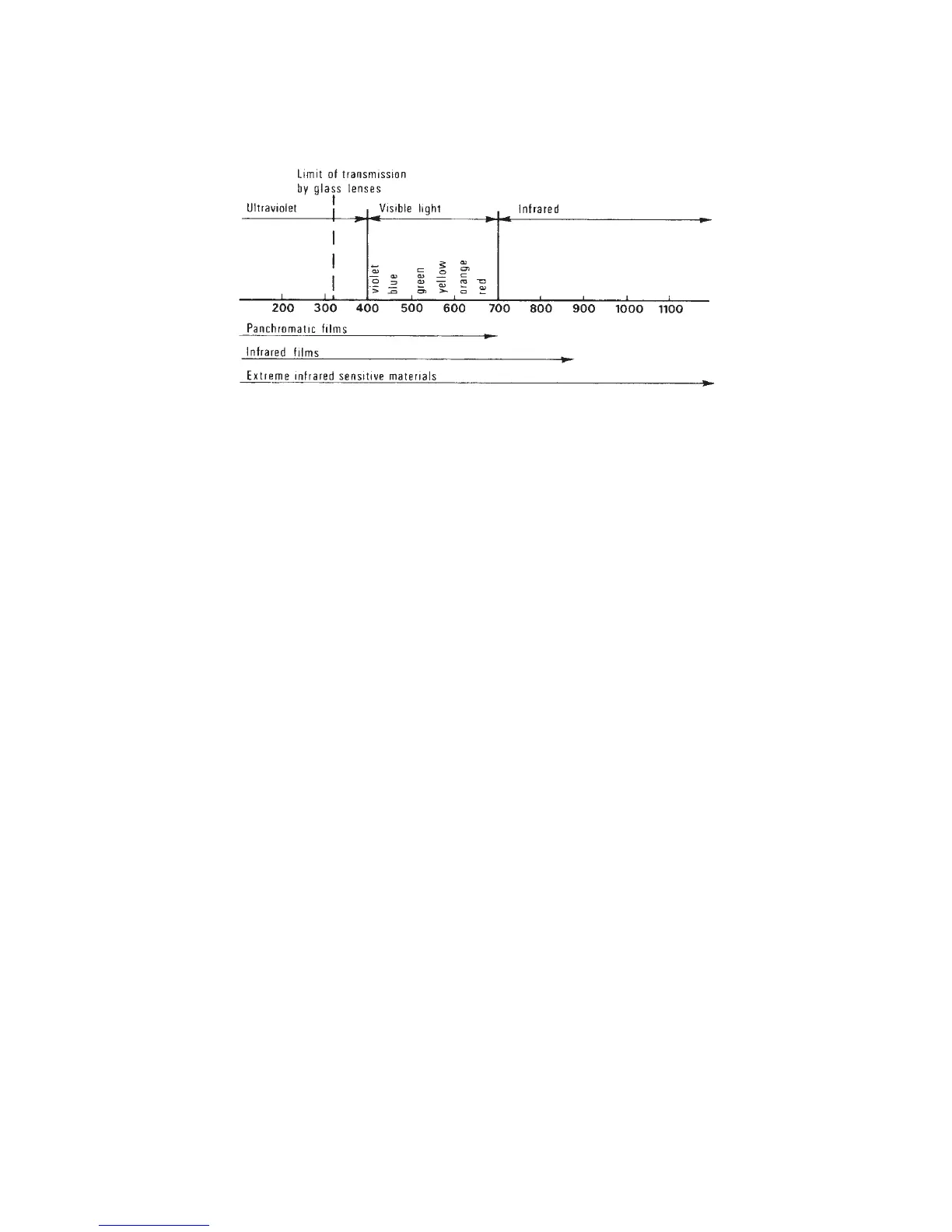332 THE HASSELBLAD MANUAL
Ultraviolet and Fluorescence Photography
In ultraviolet photography, the subject is illuminated with UV light and photographed through
a fi lter, such as the Kodak 18A, that absorbs all the visible light. UV photography is used
mainly in the scientifi c fi eld for the examination of altered documents, engravings, tapestries,
paintings, sculptures, etc. Regular fi lm and lenses can be used for photography in the longer
wavelength ranges. Special lenses made from quartz elements are necessary when working in
the shorter ranges. Such a lens of 105 mm focal length made by Carl Zeiss used to be available
for Hasselblad V system SLR cameras.
Fluorescence photography means photographing objects and materials that fl uoresce
when subjected to UV light, such as a black light (BLB fl uorescent tube). The radiation
refl ected from the subject is visible to the eye and can be photographed on regular fi lms or
with digital cameras and with regular camera lenses. A UV fi lter is recommended on the lens.
The often brilliant and striking colors call for color fi lm in fi lm photography. Exposure can be
determined with a handheld or built-in meter, but test exposures are suggested.
Electronic fl ash is another light source for fl uorescence work. A fi lter that absorbs most of
the visible light, such as a Kodak 18A, must be placed over the fl ash unit.
Infrared Photography
Infrared radiation has important applications in scientifi c photography. There are also excit-
ing possibilities for the experimenting photographer to produce images with unusual tonal
renditions on black and white fi lm. For most photographic purposes, wavelengths from 700
to about 900 nm are used.
Almost all light sources used in photography, including daylight, can be used for infrared
work. The photography can be done with digital cameras as discussed in Chapter 3 and at
the end of this chapter. Film photography must be done on special infrared fi lms, which
Figure 17-12 The wavelength spectrum. Visible light extends from 400–700 nm; infrared
radiation has wavelengths above this, and ultraviolet has wavelengths below it. Panchromatic
emulsions record radiation up to about 730 nm, infrared fi lms up to about 880 nm, and
extreme infrared materials beyond 1000 nm. Ultraviolet light, at the other end of the
spectrum, is recorded on regular emulsions. Glass transmits radiation down to about 320 mm.

